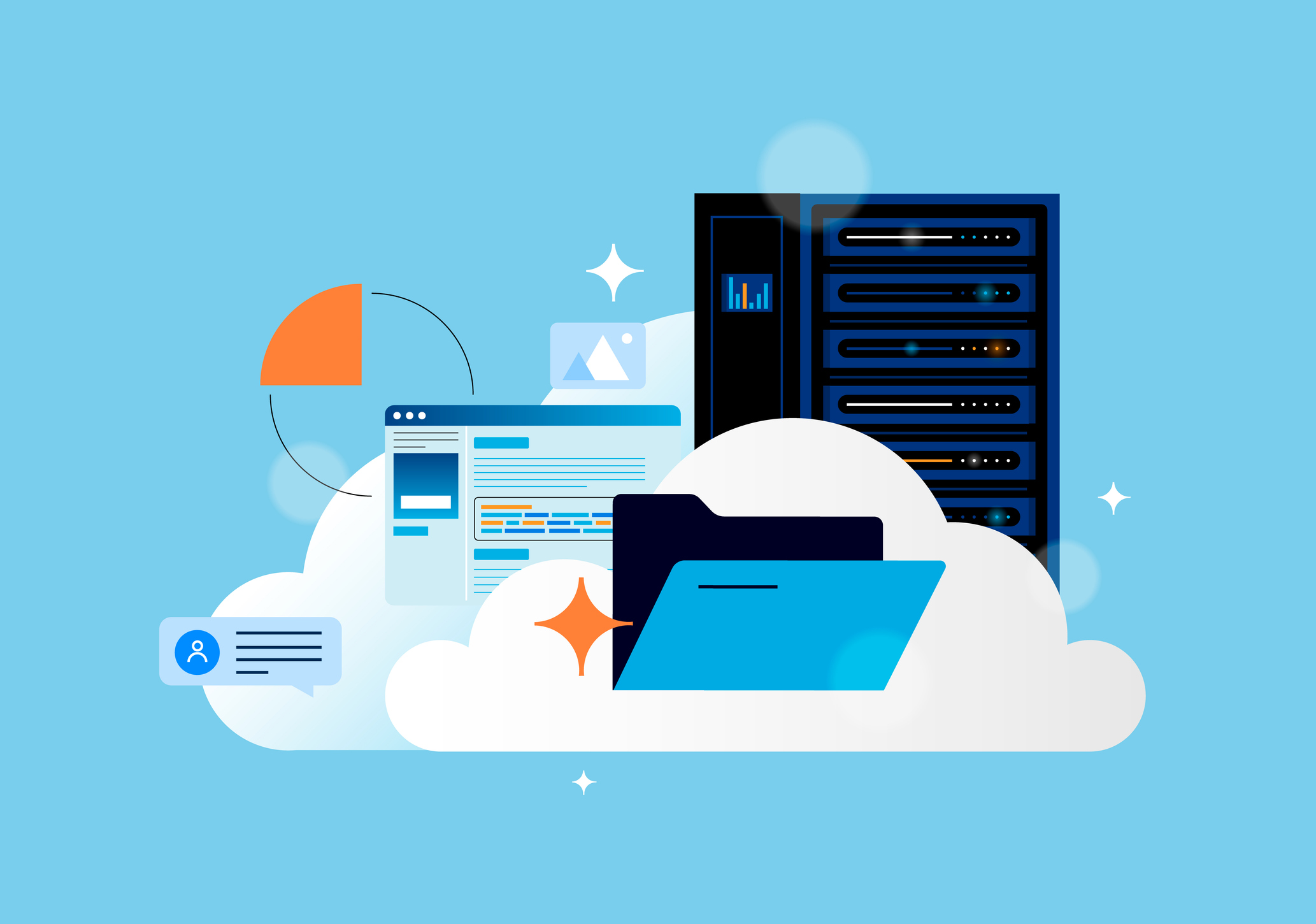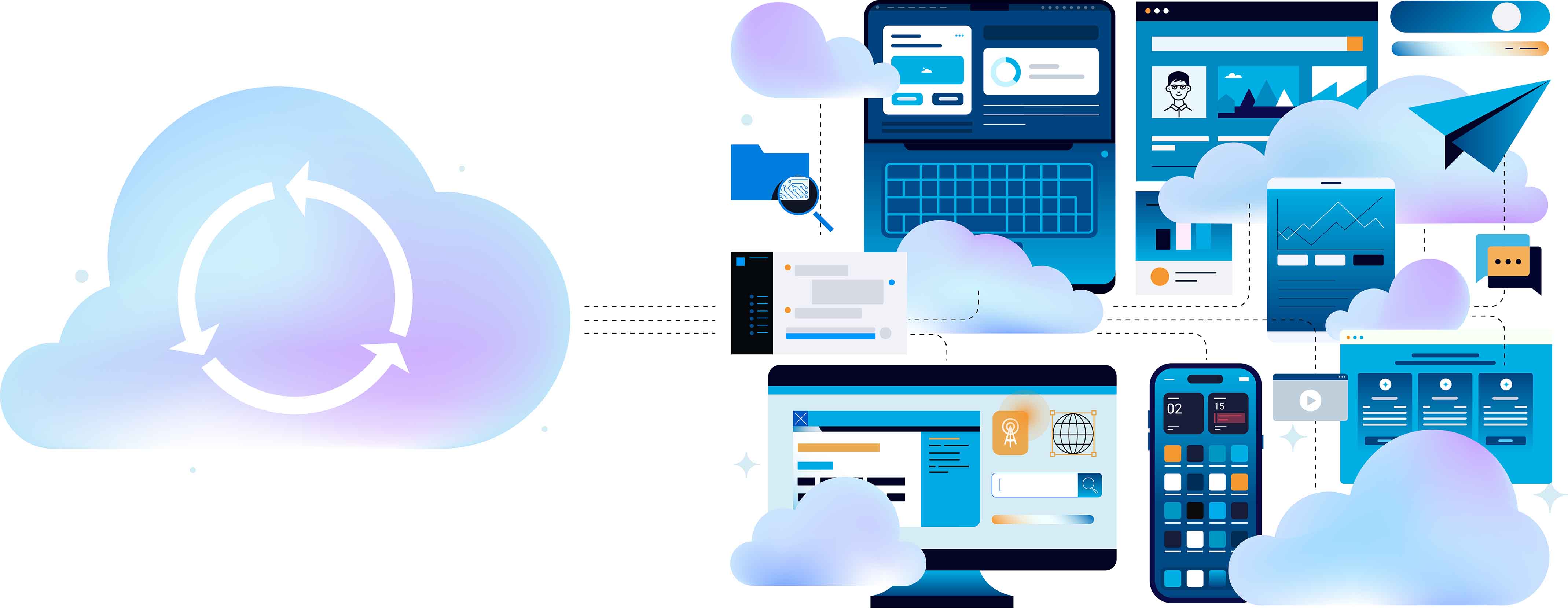Featured
Why Cloud-Based Call Center Solutions Are the Future of Customer Support
by Erina Suzuki | Published On December 5, 2023 | Last Updated March 14, 2025

Explore the benefits of cloud-based call center solutions, from cost savings to AI-driven automation. Learn how scalable, secure, and flexible cloud platforms enhance customer service and streamline operations.
The customer support landscape is rapidly evolving, and cloud-based call center solutions are emerging as the preferred choice for businesses aiming to deliver exceptional customer experiences. According to Polaris Market Research, the global cloud-based call center market is projected to grow at a remarkable CAGR of 25.1%, reaching $77 billion by 2032. This growth is driven by the unmatched scalability, operational efficiency, and cost-saving benefits these solutions offer.
What Are Cloud-Based Call Center Solutions?
Cloud-based call center solutions are contact center platforms hosted in the cloud, allowing businesses to manage customer interactions through internet-based infrastructure instead of traditional on-premises hardware. These solutions offer greater scalability, flexibility, and cost efficiency, enabling seamless communication via voice, chat, email, and AI-powered automation.
Key Advantages of Cloud-Based Call Center Solutions
Cloud solutions are increasingly recognized for their transformative impact on customer support and here’s why:
1. Location Independence
Cloud technology enables agents to log in from anywhere, whether working remotely at home, or while travelling. This ensures business continuity, even during emergencies, allowing uninterrupted customer service.
2. Cost savings
Traditional call centers require on-premises servers, high energy costs, and maintenance. Migrating to cloud-based solutions eliminates these expenses, shifting to a cost-effective, scalable model.
3. Enhanced AI Capabilities
Cloud-based call centers also leverage advanced AI-powered tools, including chatbots and analytics platforms, to further enhance customer support operations. These AI tools enable predictive analytics, allowing organizations to anticipate customer needs, proactively resolve issues, and offer tailored recommendations. Real-time analytics provide instant insights into customer behavior, sentiment, and trends, empowering agents to deliver personalized, proactive interactions that elevate customer experiences.
4. Enhanced Security and Regular Updates
Cloud solutions offer enhanced security through software updates. This ensures your contact center remains secure and compliant. Regular updates protect against emerging cybersecurity threats and help maintain compliance with industry regulations. Businesses should be kept informed about upcoming updates, allowing them to plan ahead. These updates are crucial in protecting against emerging cybersecurity threats and maintaining compliance with industry regulations.
5. Scalability on Demand
Cloud infrastructure offers businesses unparalleled scalability. Unlike traditional systems, which require substantial investments in hardware and physical space, cloud solutions easily scale up or down based on real-time demands. Businesses can swiftly add or remove agents, adapt to seasonal spikes, or respond to sudden market changes without significant downtime or expenses.
6. Enhanced Agent Productivity
Cloud platforms can quickly scale up AI-driven tools like chatbots and IVR to meet business needs, offering flexibility in how many agents or interactions can be handled without manual intervention. Traditional on-prem systems may struggle to adapt to varying demands.

Challenges of Migrating to Cloud-Based Call Centers (+ How to Overcome Them!)
While cloud-based call centers offer numerous advantages, businesses should also be aware of potential challenges, including:
Data Migration Complexity
Migrating large volumes of historical data to a cloud system can be complex and time-consuming due to several reasons. Some of them include validation, integration with existing systems, and ensuring compliance with regulatory standards.
How to Overcome It:
- Plan Ahead: Break the migration into smaller, manageable chunks for better control and fewer disruptions.
- Use Automation Tools: Leverage cloud migration tools that automate the process, reducing manual effort and minimizing errors.
- Backup and Testing: Ensure data is backed up before migration and conduct rigorous testing post-migration to verify the integrity of your data.
Change Management
Employees accustomed to traditional systems might resist adopting new cloud technologies, highlighting the importance of effective training and clear communication.
How to Overcome It:
- Comprehensive Training: Offer hands-on training sessions, simulations, and interactive workshops to ensure employees feel comfortable with the new cloud tools.
- Clear Communication: Keep employees informed about the migration process, its benefits, and its impact on daily operations.
- Empathy and Support: Understand that change can be challenging. Providing additional support and motivating the team can help ease the transition.
Security Concerns
Some businesses might have reservations regarding cloud security and data protection, emphasizing the need for careful provider selection and robust security policies.
How to Overcome It:
- Choose the Right Provider: Prioritize providers with strong security features and compliance certifications (such as GDPR, HIPAA, etc.).
- Regular Audits: Conduct security audits to identify vulnerabilities and ensure robust protection.
- Employee Education: Train employees on cloud security best practices, such as using strong passwords and recognizing phishing attempts.

Best Practices for Migrating to a Cloud Contact Center
While migrating to a cloud-based call center offers significant benefits, it requires strategic planning. Consider these best practices to ensure a successful migration:
- Choose a Reputable Cloud Provider: Select a provider that aligns with your business requirements, compliance standards, and industry-specific regulations. Prioritize providers known for reliability, customer support, and robust security measures.
- Asses Current Systems: Conduct an audit of your current systems and identify any potential challenges in data migration. Think about the channels you use (voice, chat, email) and whether the solution supports advanced features like AI-driven automation, real-time analytics, and integrations with existing systems.
- Train Your Workforce: A successful migration is not just about the technology—it’s also about the people using it. Provide comprehensive training to agents and administrators to ensure they understand how to leverage new tools effectively.
- Plan for Continuous Monitoring & Support: Migration is not a one-time process. Establish ongoing monitoring systems to track system performance, security vulnerabilities, and customer interactions. Having a dedicated IT team or vendor support in place can help resolve issues quickly.
- Optimize for Performance & Scalability: Cloud contact centers offer scalability, but organizations should fine-tune their setup based on expected call volumes and peak business hours. Monitor performance metrics such as latency, uptime, and response time to maintain seamless operations.

Future Trends in Cloud-Based Call Center Technology
Cloud-based call centers continue to evolve, driven by advancements in technology and shifting customer expectations. Some key future trends include:
Increased Emphasis on Data Privacy and Compliance
As data privacy regulations continue to evolve, cloud-based call centers will increasingly prioritize data security, compliance management, and transparency. Providers will leverage blockchain technology and advanced encryption to enhance data security, reassuring customers and ensuring regulatory compliance.
Enhanced AI Integration
AI-driven solutions will become even more sophisticated, enabling predictive customer support, sentiment analysis, and personalized service recommendations. Future AI advancements will include deeper natural language understanding, enabling more seamless and intuitive interactions.
Real-time Customer Insights
Advanced analytics and machine learning will provide deeper insights into customer behavior, allowing businesses to proactively address customer needs and preferences. Real-time dashboards and predictive analytics will empower agents with actionable insights, enhancing personalized customer engagement.

Embrace the Future of Customer Support
Cloud-based call centers are more than just an upgrade; they're the foundation of modern customer service strategies. By leveraging scalable, secure, and AI-driven technologies, your organization can proactively enhance customer satisfaction, streamline operations, and stay competitive in a rapidly evolving market.
Not sure where to start? ComputerTalk’s ice Contact Center is built for the cloud. Discover how our platform can transform your operations by contacting us today.
More from our blog
 Here are a few best practices that you can use in your contact center to boost efficiency.
Here are a few best practices that you can use in your contact center to boost efficiency.
 Nine in 10 businesses with more than 10 employees use CRM software.
Nine in 10 businesses with more than 10 employees use CRM software.
 On January 22nd, ComputerTalk hosted our latest Slice of ice webinar on iceSurvey, our built-in survey tool designed to capture valuable customer feedback. During this session, our Training & Documentation Specialist, Diane Vasquez, walked attendees through the features, setup, and...
On January 22nd, ComputerTalk hosted our latest Slice of ice webinar on iceSurvey, our built-in survey tool designed to capture valuable customer feedback. During this session, our Training & Documentation Specialist, Diane Vasquez, walked attendees through the features, setup, and...

